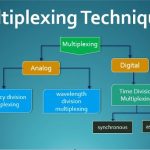Since the introduction of first commercial mobile phone in 1983 by Motorola, mobile technology has come a long way. Be it technology, protocols, services offered or speed, the changes in mobile telephony have been recorded as generation of mobile communication. Here we will discuss the basic features of these generations that differentiate it from the previous generations.
1G Technology
1G refers to the first generation of wireless mobile communication where analog signals were used to transmit data. It was introduced in the US in early 1980s and designed exclusively for voice communication. Some characteristics of 1G communication are −
- Speeds up to 2.4 kbps
- Poor voice quality
- Large phones with limited battery life
- No data security
2G Technology
2G refers to the second generation of mobile telephony which used digital signals for the first time. It was launched in Finland in 1991 and used GSM technology. Some prominent characteristics of 2G communication are −
- Data speeds up to 64 kbps
- Text and multimedia messaging possible
- Better quality than 1G
When GPRS technology was introduced, it enabled web browsing, e-mail services and fast upload/download speeds. 2G with GPRS is also referred as 2.5G, a step short of next mobile generation.
3G Technology
Third generation (3G) of mobile telephony began with the start of the new millennium and offered major advancement over previous generations. Some of the characteristics of this generation are −
· Data speeds of 144 kbps to 2 Mbps
· High speed web browsing
· Running web based applications like video conferencing, multimedia e-mails, etc.
· Fast and easy transfer of audio and video files
· 3D gaming
Every coin has two sides. Here are some downsides of 3G technology −
- Expensive mobile phones
- High infrastructure costs like licensing fees and mobile towers
- Trained personnel required for infrastructure set up
The intermediate generation, 3.5G grouped together dissimilar mobile telephony and data technologies and paved way for the next generation of mobile communication.

4G Technology
Keeping up the trend of a new mobile generation every decade, fourth generation (4G) of mobile communication was introduced in 2011. Its major characteristics are −
- Speeds of 100 Mbps to 1 Gbps
- Mobile web access
- High definition mobile TV
- Cloud computing
- IP telephony


